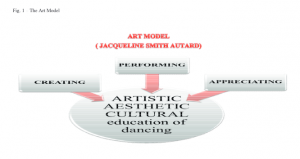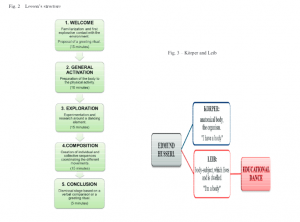Share a story about your best learning experience (could be a formal course or something more personal). Why did you enjoy it?
My best learning experience would have to be anytime I was learning at the dance studio. This took place in various forms as I was both a student and instructor. As a student I was learning new choreography and dances, whereas a dance instructor I was sharing my knowledge and passion for dance with younger students. Therefore, I was able to learn through my own dance classes as well as by adapting and learning from the diversity of students within the dance studio. There are multiple reasons for why I enjoyed this, and I believe one of which is that we were all motivated through a shared passion (dance), as such in the teacher role I acted as a role model to the students. As a result, students are practicing and enticed to learn, and that drive, and passion is something I strive to support in my future classroom. Learning is all about the journey it takes to get there and I believe this created steps and enticed students to practice skills to improve.
In relation to the reading around behaviourism, cognitivism and constructivism
- Behaviourism is deemed to have learning be derived by a “stimulus and a response” such as a reward and punishment model. Behaviourism, however, has shaped our understanding as it allows us to understand the importance of the context of learning and how past experiences motivate or demotivate us to learn.
- Similarly, cognitivism focuses on the role of what happens within the black box and how it influences behaviour and learning. However, this theory “moves the idea of manipulating stimulus (behaviourism) towards a focus on the idea of thinking and mental processing”.
- Finally, constructivism is” learner centred” and generates the idea that the classroom is a collaborative model where we can all learn from each other as we each share diverse experiences and opinions.
Below are some key theorists in regard to the previously mentioned learning theories.
- Behaviourism: Pavlov (classical), Thorndike (classical), Watson (classical) and Skinner (operant conditioning)
- Constructivism: Piaget (individual) and Vygotsky (social).
In summary, I believe that the reason dance was my best learning experience is because it was not only my passion but also it was “student centered”; where the students are able to explore and be creative all while learning. As a result, I think this model is important to strive for as it motivates students by putting learning in their own hands. Similarly, this model could be used in regard to an inquiry project as the teacher guides and learns alongside the students. As such facilitating this model can help foster a dynamic and collaborative classroom. Also in order to motivate all students each student can then have an individual and more specific goal related to that lesson, thus making the learning more personal.
All in all, I believe that a mixture of various styles of teaching and learning is beneficial as all students are different and one situation or one student may result in using one style over another.
References
Ertmer, P. A., & Newby, T. (2018) Behaviourism, cognitivism, constructivism: Comparing critical features from an instructional design persepctive. In R. E. West, Foundations of Learning and Instructional Design Technology: The Past, Present, and Future of Learning and Instructional Design Technology. EdTechBooks. https://edtechbooks.org/lidtfoundations/behaviorism_cognitivism_constructivism
ED-D 301 Class notes
James , H. N. (2020a, May 13). Learning theories. EDCI 335 Learning Design. https://edtechuvic.ca/edci335/learning-theories/
James, H. N. (2020b, May 13). Motivation and learning. EDCI 335 Learning Design. https://edtechuvic.ca/edci335/motivation/




Recent Comments